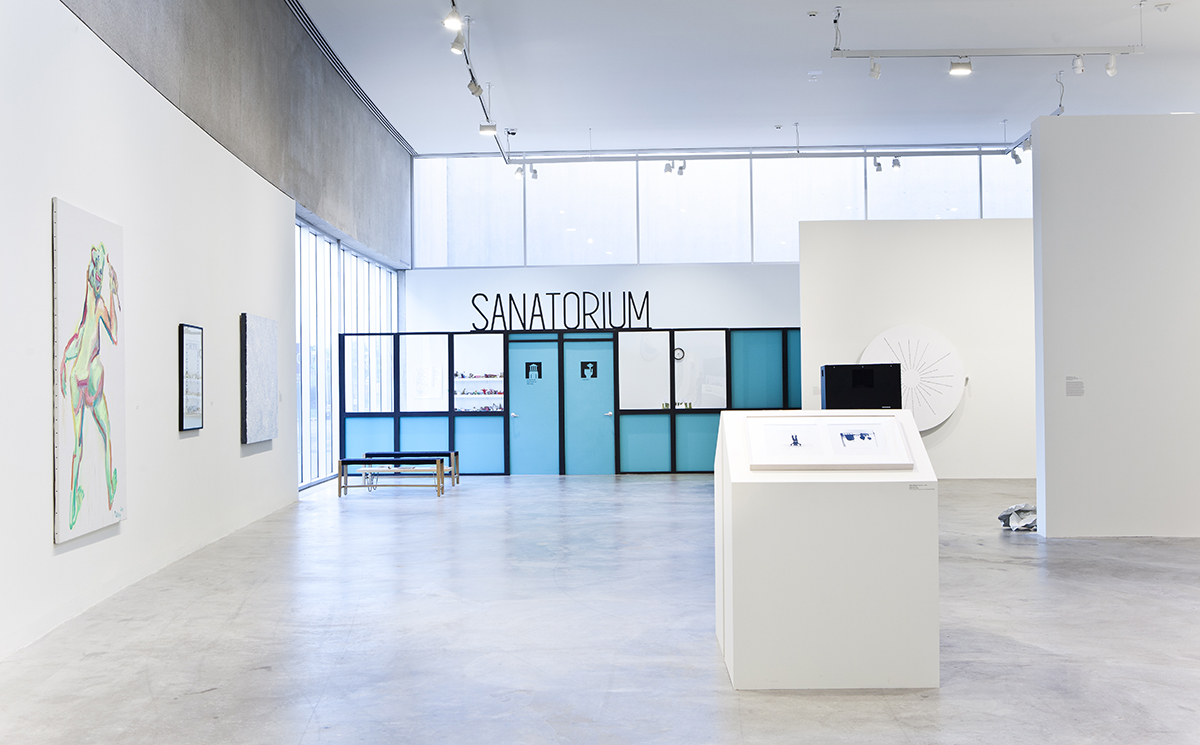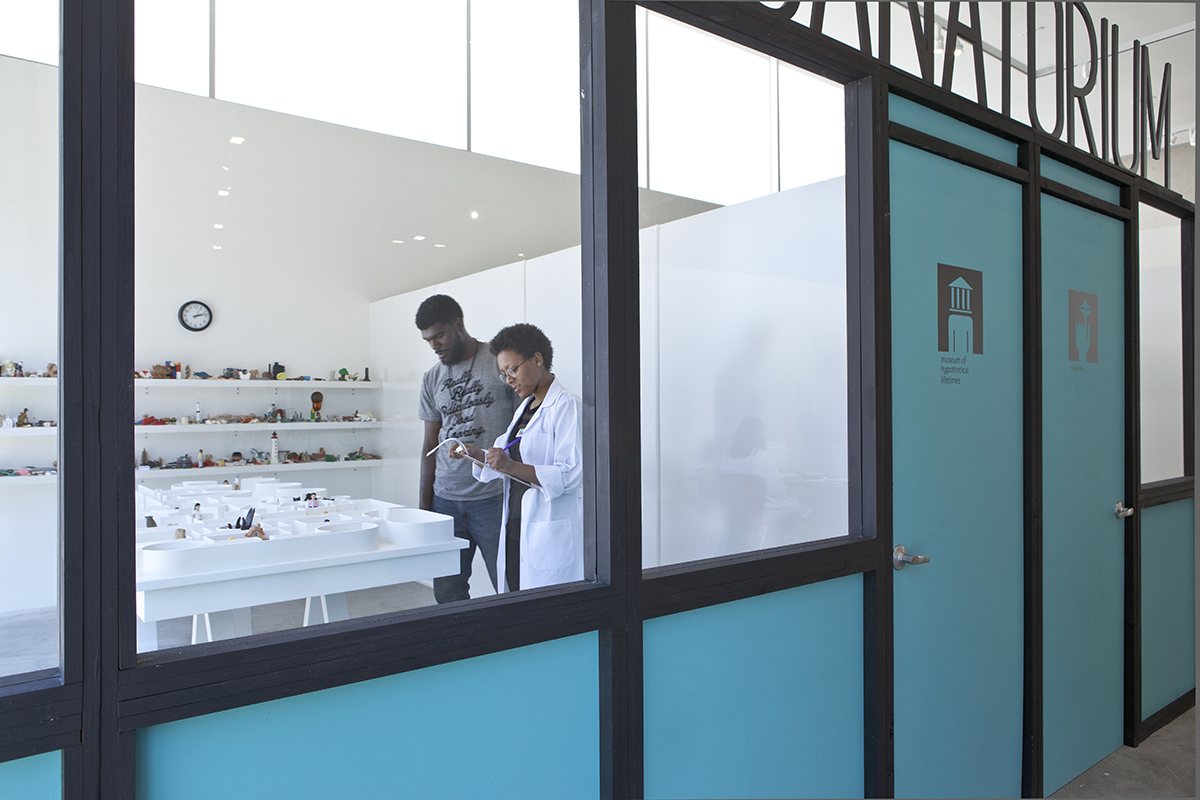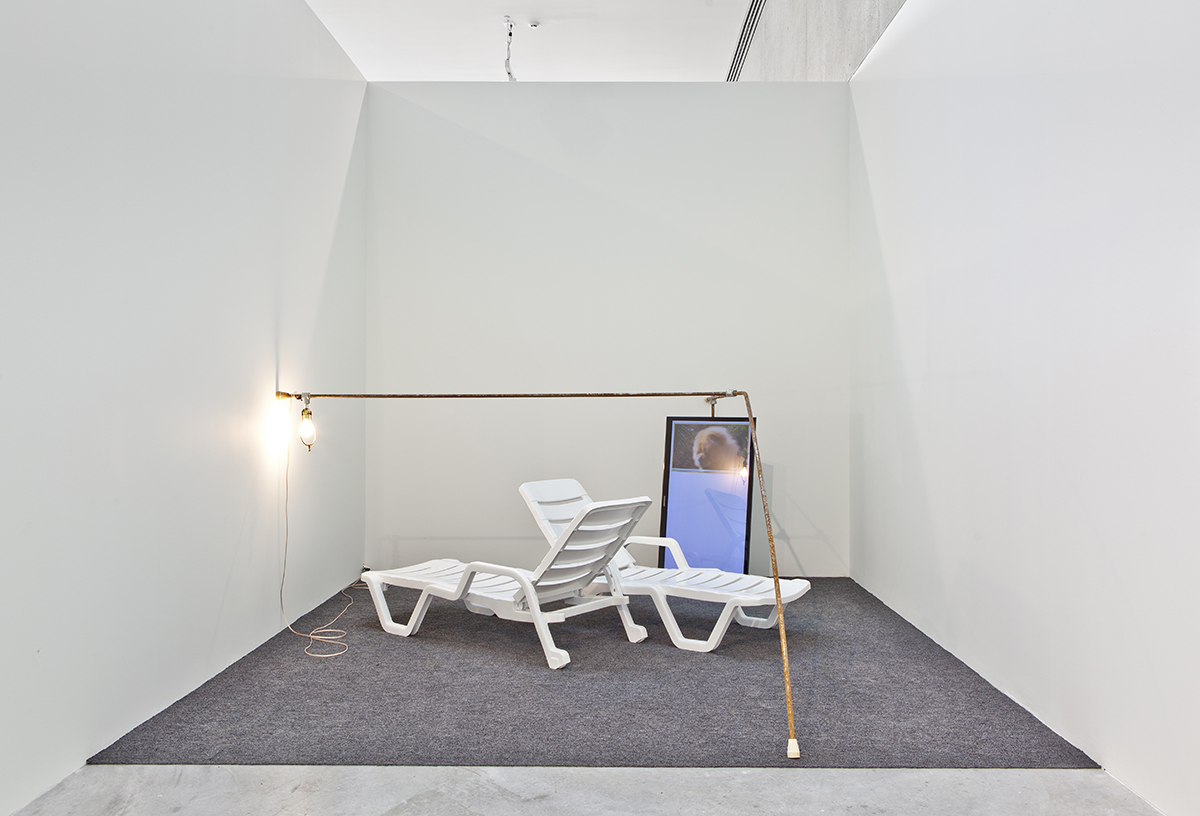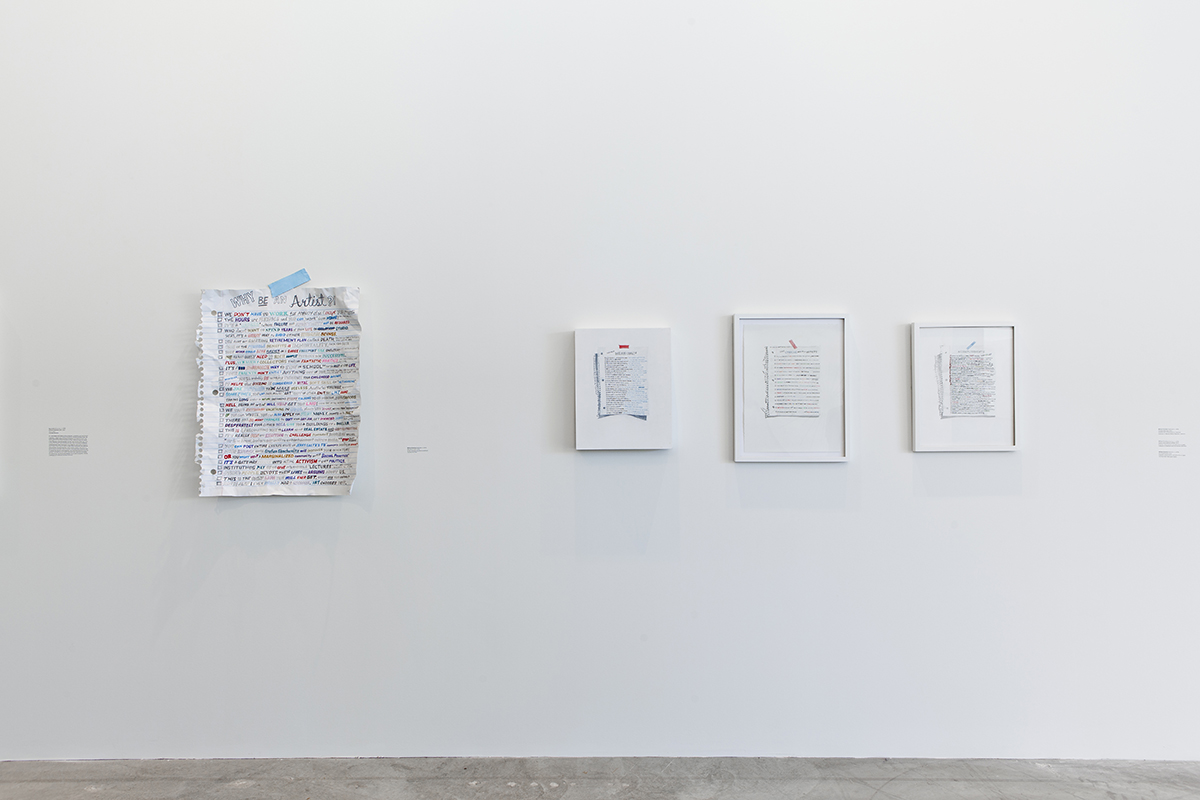Where does inspiration come from? How do artists cope with pervasive skepticism and doubt? Can one acknowledge and celebrate artistic forebears while also finding one’s own voice? In our media-saturated climate, where artists find themselves subject to both increased visibility and constant scrutiny, some of the most incisive and poignant answers to these questions are often found in works of art themselves.
Encompassing a wide range of media—including painting, drawing, sculpture, photography, installation, performance, and video—from the 1960s to the present, Occupational Therapy expresses and addresses a variety of psychological conditions, both real and imagined, made manifest by artistic practice. The exhibition features artwork by twenty renowned artists: John Baldessari, Martin Brief, Tammy Rae Carland, Rochelle Feinstein, Karl Holmqvist, Christian Jankowski, Martin Kippenberger, Yayoi Kusama, Maria Lassnig, Lee Lozano, Bruce Nauman, Carl Pope, William Powhida, Pedro Reyes, Deb Sokolow, Buzz Spector, Frances Stark, William Wegman, and Andrew Norman Wilson and Nick Bastis.
Sincere, cynical, and humorous in equal measure, the works on view engage the complexities and challenges of being an artist. Featured artists inhabit a variety of roles, from therapist, director, and narrator to patient, actor, and subject. Debunking the notion of the artist as enlightened genius, the exhibition aims to humanize the creative process. Several artists, including Lee Lozano, Deb Sokolow, and Frances Stark, assume a diaristic tone, employing text in the form of manifestos, doodles, and journals to give voice to personal insecurities and frustrations. They question art’s perceived ability to affect change. Some, like Pedro Reyes, also propose new paradigms for transformation. Other artists—Martin Brief, Rochelle Feinstein, Martin Kippenberger, and William Powhida—address what they consider to be the art world’s insincerity, preoccupation with celebrity, and obsession with the market. While many works function diagnostically by indexing the various issues artists face, others—by Christian Jankowski and William Wegman, for example—offer tongue-in-cheek prescriptions for staving off conditions such as anxiety or artist’s block. Whether aspiring to wellness or imparting words of wisdom, Occupational Therapycrystallizes art therapy’s directive to sublimate one’s afflictions through the act of making art.
Sanatorium
As part of Occupational Therapy, Sanatorium is a living artwork by Mexican artist Pedro Reyes that explores art and psychology. This transient clinic provides short “therapies,” using a combination of ritual, play, and experimentation, by volunteer “therapists” who are trained through a program designed by the artist. CAM’s presentation marks the Midwestern premiere of Sanatorium, which was first presented by the Guggenheim Museum (2011) and was included in the most recent Documenta in Kassel, Germany (2012).
Occupational Therapy is organized for the Contemporary Art Museum St. Louis by Kelly Shindler, Associate Curator.








